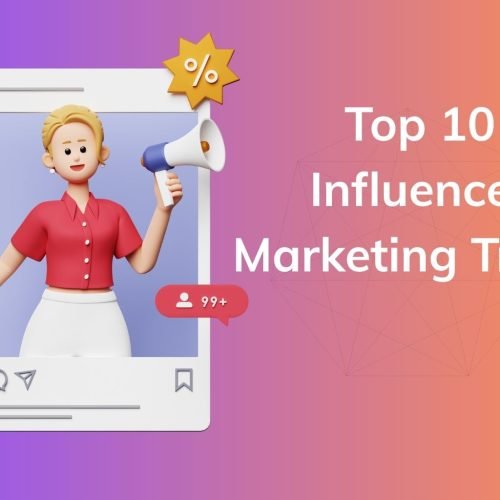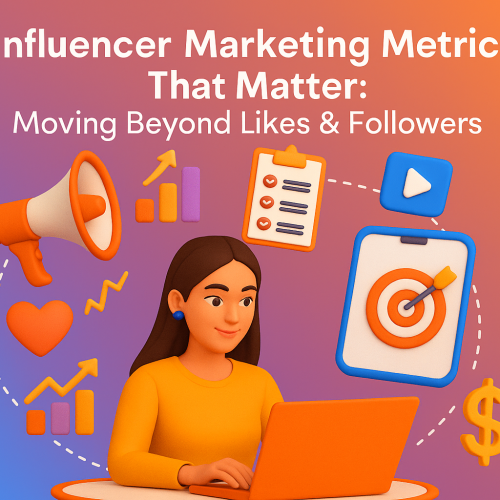Influencer Marketing Agency
For years, likes and followers were the gold standard of influencer success. But as influencer marketing matures, brands are realizing that vanity metrics no longer tell the full story. Engagement without action doesn’t drive results — and inflated follower counts don’t guarantee trust or conversions.
To measure true success, brands and creators must focus on meaningful metrics that reflect genuine impact, transparent performance, and structured collaboration. Let’s explore the influencer marketing metrics that matter most in 2025 and beyond.
1. Engagement Quality Over Quantity
Yes, engagement still matters — but how people engage matters more than how many do. A post with 500 thoughtful comments and genuine discussion is more valuable than 5,000 random likes.
Look for:
- Comment relevance – Are followers asking questions or sharing real feedback?
- Save & share rates – Indicates long-term content value.
- Click-through actions – Showcases intent beyond the platform.
A quality influencer marketing platform can help track these deeper insights, revealing which creators truly influence their audience rather than simply entertain them.
2. Conversion & ROI Tracking
At the end of the day, brands care about results — sales, sign-ups, downloads, or awareness. With advanced tracking tools and structured campaign setups, it’s now easier than ever to measure conversion data directly tied to influencer efforts.
Metrics that show ROI include:
- Conversion rate per campaign
- Cost per acquisition (CPA)
- Revenue generated per influencer
By running structured campaigns with pre-defined deliverables and transparent pricing, brands can clearly see how each influencer contributes to business outcomes — not just engagement numbers.
3. Authenticity & Audience Match
One of the strongest predictors of campaign success is audience alignment. A well-matched influencer with a smaller, engaged community can outperform a mega-creator whose audience isn’t interested in your niche.
When building brand collaborations, look at:
- Audience demographics (age, location, interests)
- Past brand partnerships
- Content consistency and tone
This ensures the partnership feels natural and authentic — maintaining audience trust while delivering measurable brand value.
4. Creator Reliability & Partnership Performance
Long-term success in influencer marketing comes from influencer partnerships, not one-off posts. Reliable influencers consistently meet deadlines, produce high-quality content, and drive results over time.
Brands should track:
- Campaign completion rates
- Communication responsiveness
- Consistency in content quality
- Collaboration history
A transparent, data-driven influencer marketing platform like MicroMatching can help brands identify top-performing creators, paving the way for lasting partnerships that benefit both sides.
5. Influencer Earnings & Fair Compensation
Influencer marketing thrives on mutual value. When creators feel fairly compensated, they deliver better results and stay loyal to the brand.
Using systems with transparent pricing and predefined packages ensures fairness. Influencers know what they’ll earn, and brands understand exactly what they’re paying for. This structured approach eliminates guesswork — creating a win-win model of trust, performance, and satisfaction.
6. Content Longevity & Post-Campaign Impact
The most successful influencer campaigns generate results long after the post goes live. Tracking metrics like:
- Website traffic over time
- Ongoing engagement on older posts
- Brand mentions after campaign end
…helps measure the long-term value of your influencer partnerships. This data shows whether influencers are truly shaping perceptions or simply providing short-term exposure.
7. Data Transparency & Platform Insights
In 2025, data transparency has become the backbone of effective influencer marketing. Brands now demand access to real, verifiable performance insights — not screenshots or vanity analytics. Advanced influencer marketing platforms provide live dashboards that track engagement, authenticity, conversion sources, and demographic accuracy. This transparency helps brands make smarter investment decisions while empowering influencers to showcase their true impact with verified data.
Final Word: From Vanity to Value
Modern influencer marketing isn’t about who shouts the loudest — it’s about who connects the best. By focusing on metrics that measure authenticity, conversion, and longevity, brands can build stronger brand collaborations that deliver consistent ROI.
Through structured campaigns, transparent pricing, and performance-driven insights, platforms like MicroMatching are value, not vanity.

